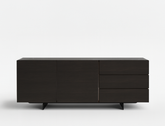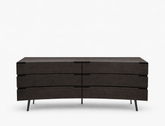Chic Combos: Mixing Furniture Styles with Ease
Mixing and matching furniture styles can transform a mundane space into an intriguing and personalized area that reflects your unique taste and style. This design technique allows for the integration of various elements from different eras, bringing a dynamic and eclectic feel to your home. However, without careful consideration, this blend can lead to visual clutter rather than a harmoniously designed space. This article delves into strategies for effectively combining furniture styles, ensuring a cohesive and appealing look.

Creating a Cohesive Color Palette
A unified color palette is foundational to blending different furniture styles seamlessly. For instance, integrating an antique sofa with a contemporary armchair is more effective when both items share a unifying color, texture, or pattern. A palette limited to two accent colors and two neutral shades prevents clashes and promotes unity. Neutrals, in particular, offer a backdrop that allows furniture pieces of varying styles to integrate without competing for attention. Introducing a contrasting accent color, like greenery, adds vibrancy while maintaining balance. Consistently applying your chosen color scheme across the room is key to achieving visual harmony.
Achieving Harmony through Proportion
Proportion plays a critical role in mix-and-match decor. A mismatch in the scale of furniture pieces, such as pairing a bulky sofa with a petite coffee table, can disrupt the room's harmony. To prevent this, visualize how different pieces will complement each other in terms of size before making any arrangements. This principle applies even to mismatched dining chairs; differing colors, patterns, or textures can coexist if the chairs are similar in size.
Utilizing Repetition for Unity
Repetition is a powerful tool in creating a cohesive mix-and-match style. Distributing identical or similar items throughout the space fosters a sense of unity. For example, pairing white chairs with a sofa of a different color can work if both items share a common design element, such as a mid-century-inspired style. Repetitive design elements, like matching cushions or decorative objects, further enhance continuity across different pieces.
Establishing Balance in Furniture Decor
Balance is crucial in mixing furniture styles. If the room predominantly features traditional furniture with dark, elaborate woods, introducing a contemporary piece with clean lines and lighter tones can create visual equilibrium. Balance involves more than just style; it requires considering texture, pattern, color, height, and size to achieve a visually cohesive space. Items of equal visual weight, such as a bold-colored sofa balanced by a patterned rug, facilitate a smooth visual flow.
Adhering to a Theme
Selecting a theme guides the mix-and-match process, ensuring that all pieces contribute to the desired aesthetic. Whether you're aiming for a Balinese vibe with timber and rattan or a cozy lounge atmosphere with a high-back leather sofa, centering your selections around a theme allows for creative variations while maintaining an overarching aesthetic.
Practical Tips for a Harmonious Mix-and-Match Design
-
Start with a Plan: Before introducing new pieces, envision the overall look you want to achieve. This helps in selecting items that contribute to your desired aesthetic.
-
Experiment with Textures: Combining various textures can add depth and interest to your space, making it feel more dynamic and layered.
-
Consider the Flow of Space: Ensure that the arrangement of different furniture styles enhances the room's functionality and does not obstruct movement.
-
Incorporate Personal Touches: Personal items and heirlooms can serve as unifying elements, adding character and a sense of history to your mix-and-match design.
-
Be Mindful of Lighting: The right lighting can enhance the colors and textures of your mixed furniture, highlighting the best features of each piece.
-
Don't Rush the Process: Creating a cohesive mix-and-match design takes time. Be patient and allow your space to evolve organically.
FAQs
-
How do I start mixing furniture styles if I have predominantly one style in my home?
Begin by introducing small pieces from a different style that complement your existing decor. This could be a side table, a lamp, or decorative cushions. -
Can I mix vintage and modern furniture styles?
Absolutely. The contrast between vintage and modern can create a visually compelling space. The key is to find a common element, such as color or material, that unites these pieces. -
How do I know if my furniture styles are clashing?
If the room feels chaotic or lacks a cohesive flow, it may indicate a clash in styles. Try removing one or two pieces to see if it improves the overall feel of the space. -
Is it okay to mix wood tones in furniture?
Yes, mixing wood tones can add warmth and depth to your space. Aim for a balance by distributing different wood tones throughout the room. -
How can I balance a bold furniture piece?
Pair it with more subdued items that share a similar color or material. This allows the bold piece to stand out without overwhelming the space. -
Can too much repetition make my space look monotonous?
While repetition helps unify the design, too much can lead to a lack of visual interest. Balance repetition with variety to keep the space engaging.
Conclusion
Mixing and matching furniture styles offers a creative way to personalize your living space. By adhering to principles of color cohesion, proportion, repetition, balance, and theme adherence, you can achieve a harmonious blend that reflects your unique style. Remember, the most important aspect of home decor is that it resonates with you and makes you feel comfortable and happy in your space.







